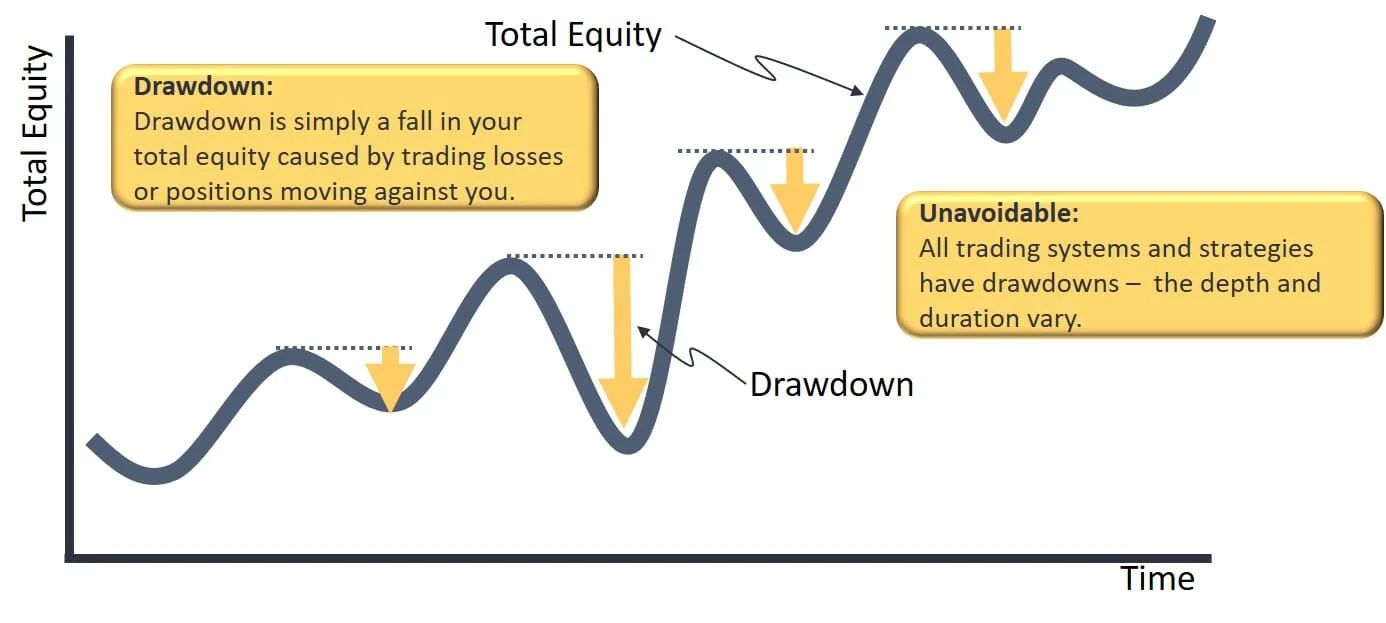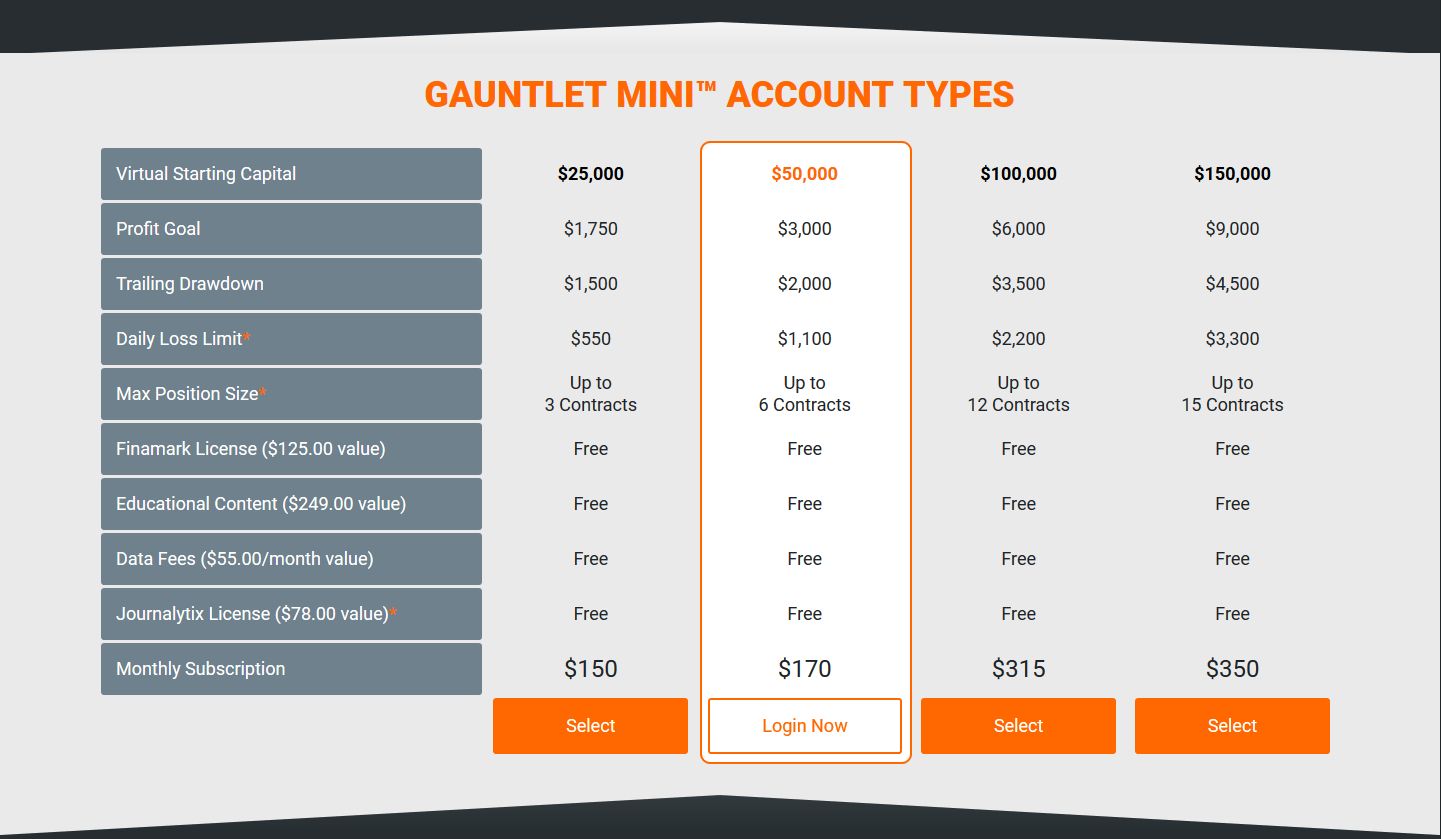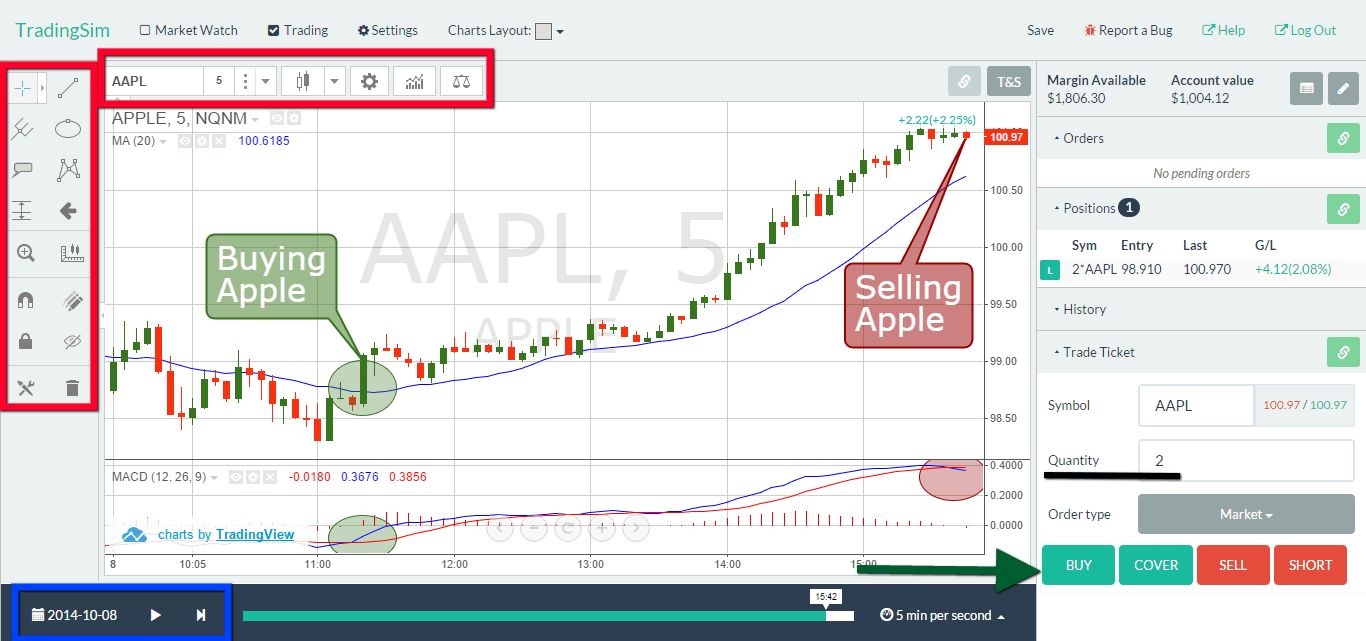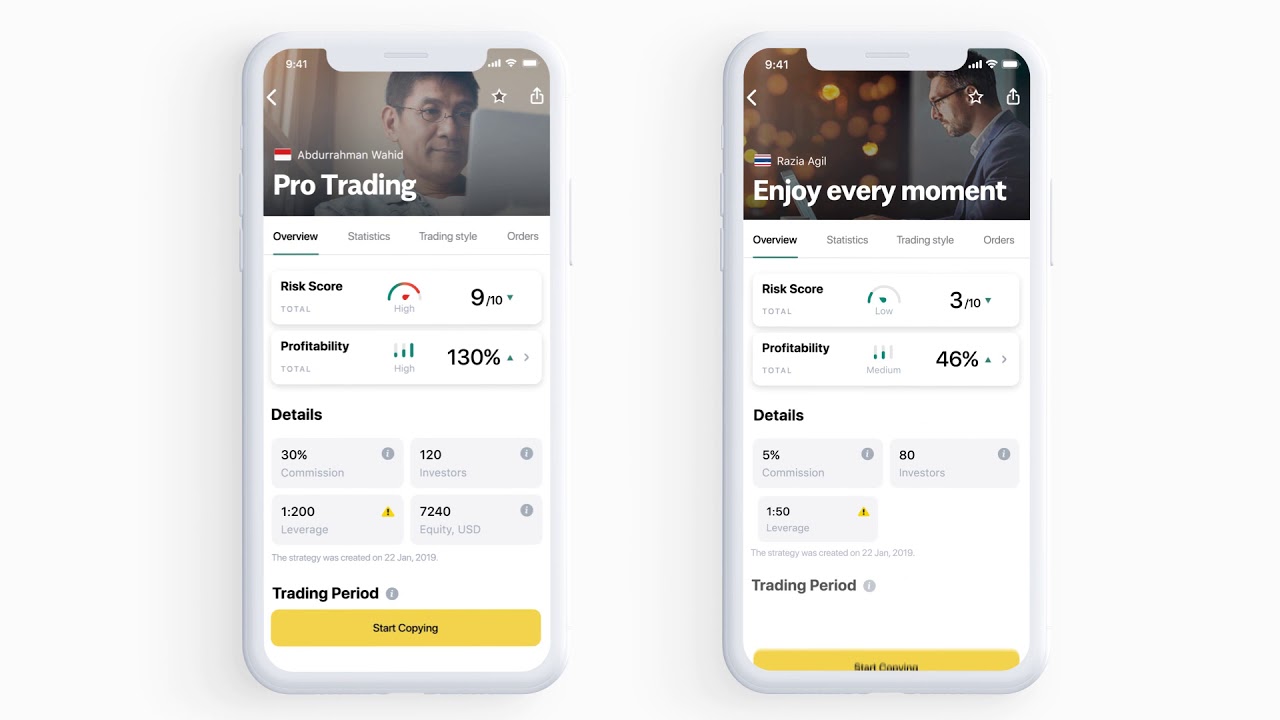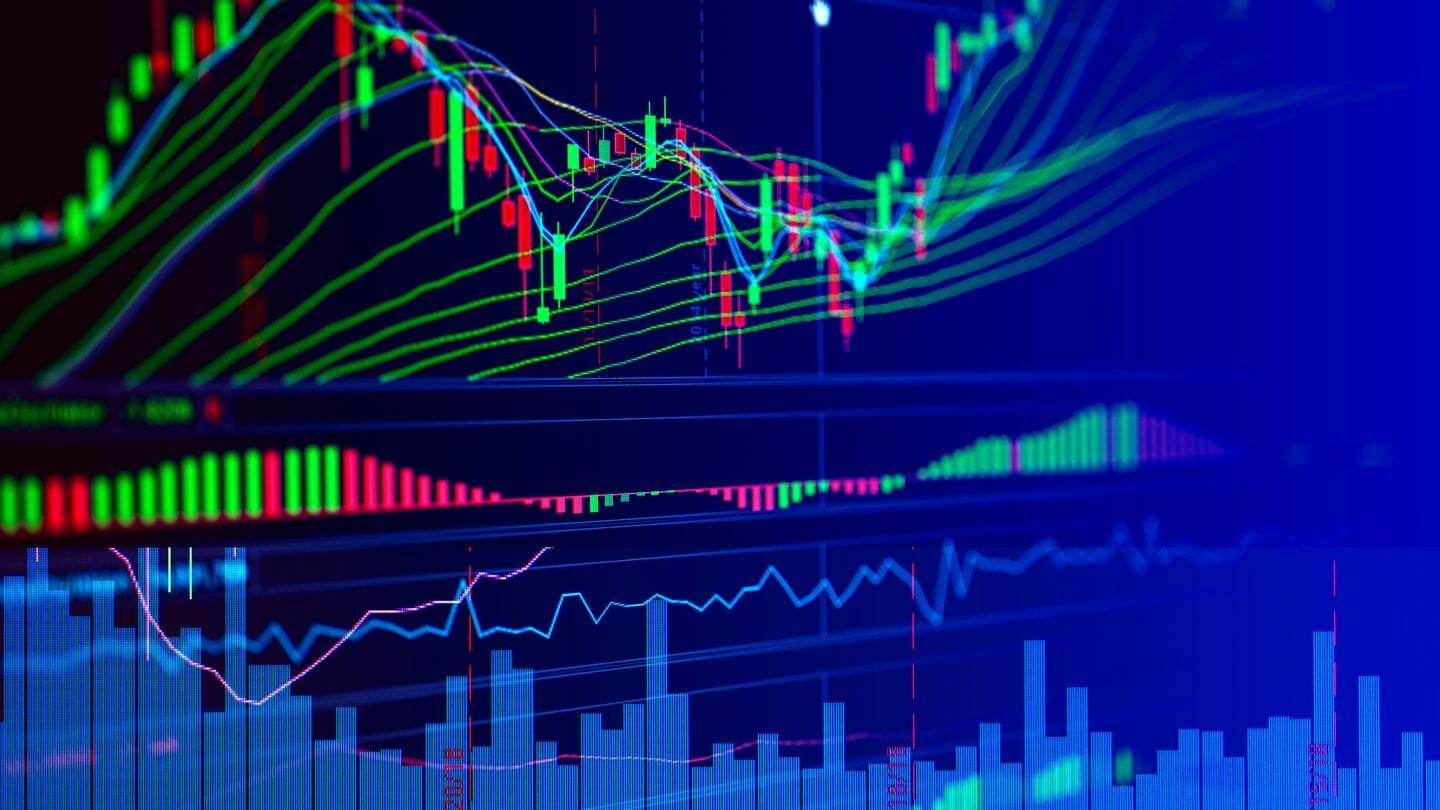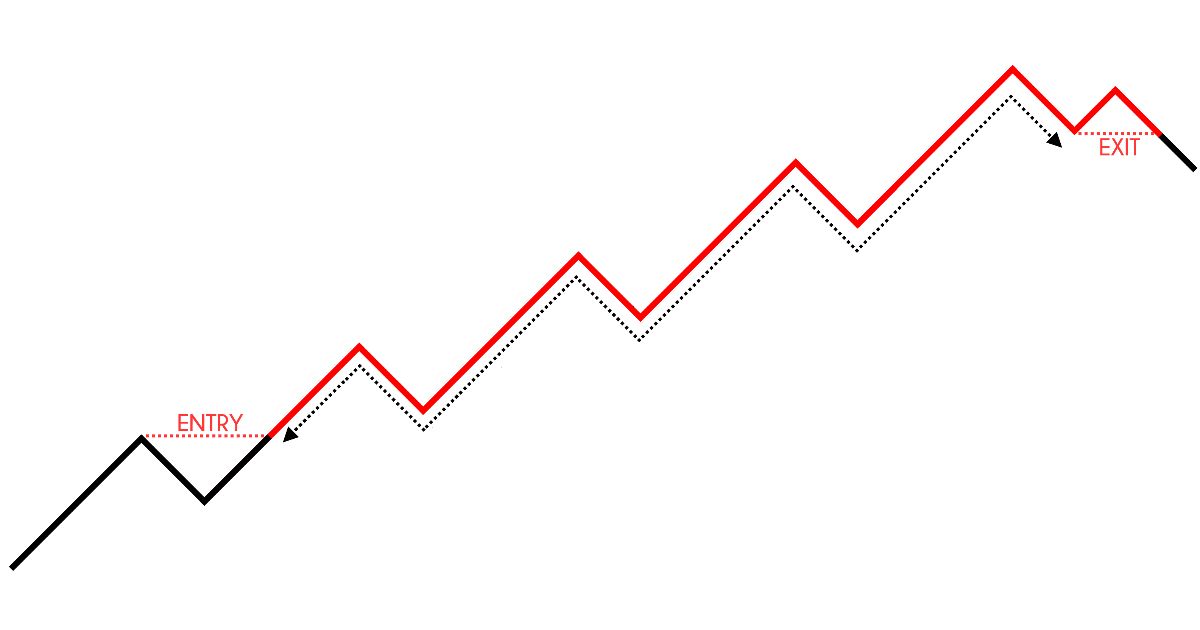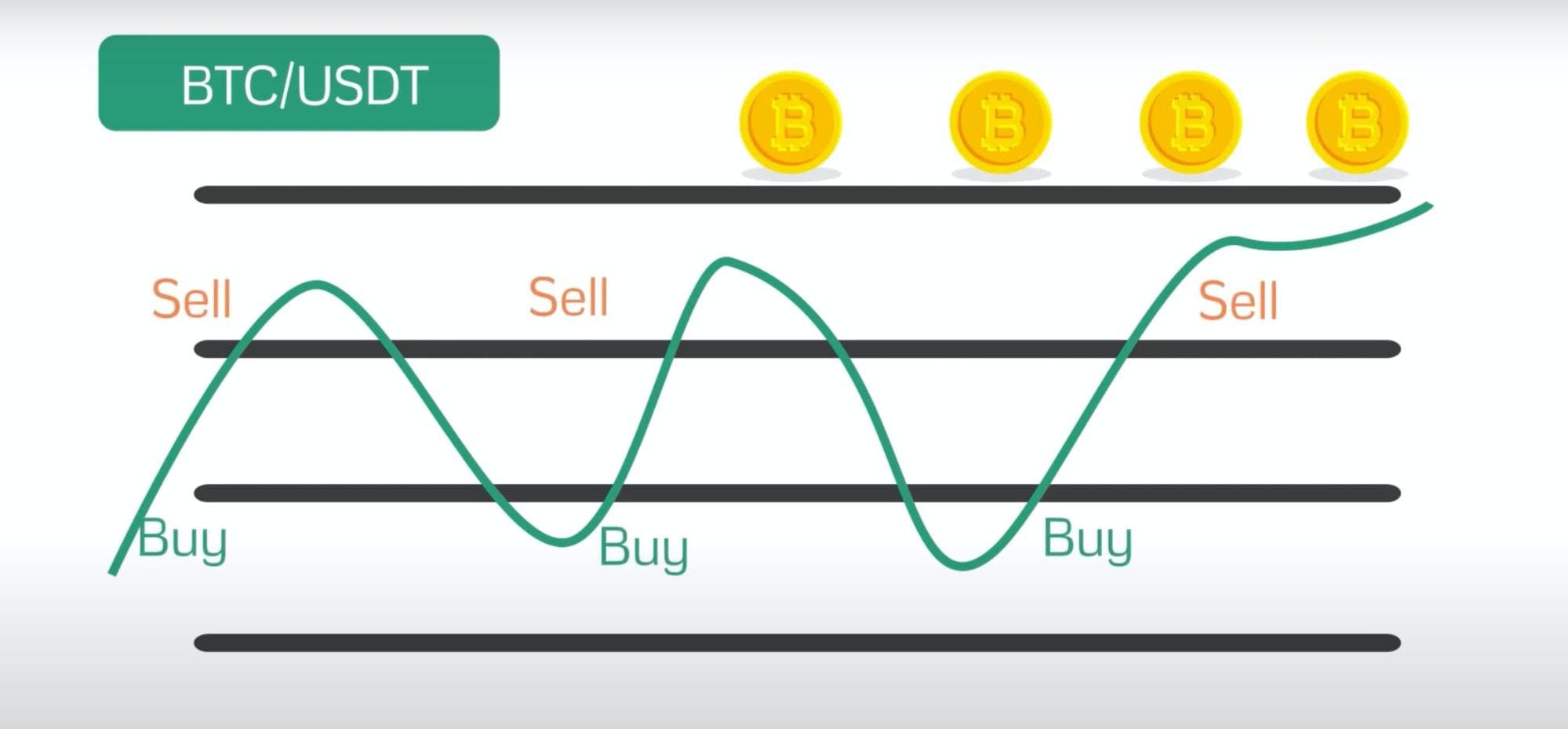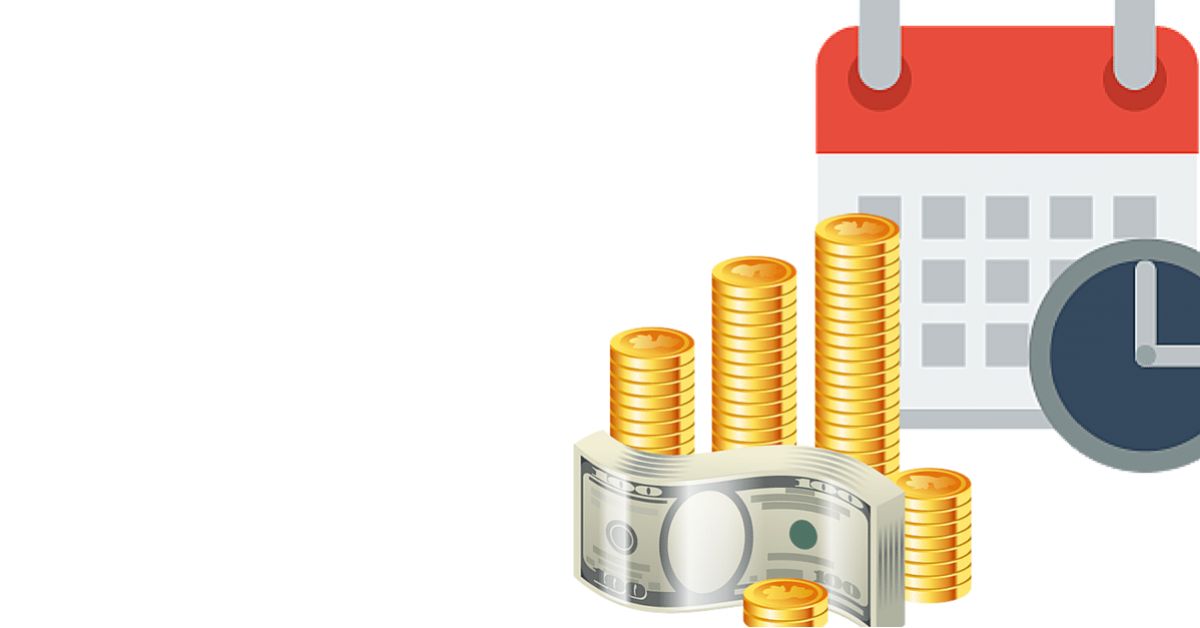Introduction
When it comes to trading, one of the key terms that traders should be familiar with is drawdown. Drawdown refers to the peak-to-trough decline in the value of an investment or trading account. It is a crucial concept that every trader needs to understand in order to effectively manage their portfolio and mitigate risks.
The ups and downs are an inevitable part of any trading journey, and drawdown serves as a measure of how much an account or investment has fallen from its previous peak level. It is an important metric that helps traders assess the potential risks and volatility associated with their trading strategy.
Drawdown is calculated as the difference between the highest point, also known as the peak, and the lowest point, referred to as the trough, in the value of the account or investment. For example, if a trading account reaches a peak value of $10,000 and subsequently drops to a trough of $7,000, the drawdown would be $3,000.
Understanding different types of drawdowns is essential to evaluate the performance and stability of a trading strategy. Commonly encountered drawdowns include equity drawdown, maximum drawdown, and system drawdown. Each of these drawdowns provides valuable insights into the overall risk and potential losses traders may face.
In trading, drawdowns occur due to various reasons, including market volatility, unexpected news events, and poor trading decisions. Traders must be prepared for drawdowns, as they can have a significant impact on their overall account balance and emotional well-being.
Drawdowns can have a substantial impact on trading and can lead to an emotional turmoil, often causing inexperienced traders to make impulsive decisions. By understanding the causes and implications of drawdowns, traders can develop effective strategies to manage them and minimize their adverse effects.
In the following sections, we will delve deeper into the calculation of drawdown, different types of drawdowns, reasons why drawdowns occur, and various strategies to manage and minimize drawdowns. These insights will equip traders with the necessary knowledge to navigate drawdowns more effectively and enhance their overall trading performance.
Definition of Drawdown
Drawdown is a term frequently used in the financial industry, particularly in trading and investing. It refers to the decline in the value of an investment or trading account from its peak to its lowest point. Drawdown is calculated as the percentage or absolute decrease in value, providing valuable insights into the risk and potential losses associated with a particular investment or trading strategy.
Drawdown can be understood as the extent to which an investment or trading account dips below its previous highest value. It is important to note that drawdown does not necessarily indicate a loss or negative return; it simply measures the decline from the peak level. In fact, drawdowns are inherent to any investment or trading activity due to the fluctuations and volatility of financial markets.
The calculation of drawdown involves determining the difference between the highest point, known as the peak, and the lowest point, referred to as the trough, in the value of the investment or trading account. This difference can be expressed either as a percentage or as an absolute value.
For instance, let’s consider a hypothetical trading account that reaches a peak value of $50,000 and subsequently drops to a trough of $40,000. The drawdown would be calculated as:
Drawdown = ($50,000 – $40,000) / $50,000 = 0.2 or 20%
In this example, the drawdown is 20%, indicating that the account experienced a decline of 20% from its peak value.
Drawdowns play a crucial role in evaluating the performance and stability of an investment or trading strategy. They provide valuable information about the potential risks and downside fluctuations that traders may encounter while pursuing their investment goals. By understanding and monitoring drawdowns, traders can make more informed decisions and take appropriate steps to manage and mitigate risks in their trading activities.
In the following sections, we will explore different types of drawdowns, the factors contributing to their occurrence, and strategies to effectively manage and minimize drawdowns. These insights will assist traders in navigating drawdowns more confidently and optimizing their trading performance.
How Drawdown is Calculated
Drawdown is a crucial metric in trading and investing that measures the decline in the value of an investment or trading account from its peak to its lowest point. It is important for traders to understand how drawdown is calculated in order to assess the risk and potential losses associated with their portfolios.
Drawdown is typically calculated as the percentage or absolute decrease in the value of the investment or trading account. The calculation involves comparing the highest point, known as the peak, to the lowest point, referred to as the trough, in the value of the account.
To calculate drawdown as a percentage, the formula is as follows:
Drawdown = (Peak value – Trough value) / Peak value * 100%
For example, let’s say an investment portfolio reaches a peak value of $100,000 and subsequently drops to a trough value of $80,000. To calculate the drawdown, we would use the following formula:
Drawdown = ($100,000 – $80,000) / $100,000 * 100% = 20%
In this scenario, the drawdown is 20%, indicating that the investment portfolio has declined by 20% from its peak value.
The calculation of drawdown as an absolute value is straightforward. It simply involves subtracting the trough value from the peak value:
Drawdown = Peak value – Trough value
Using the same example as before, the drawdown as an absolute value would be:
Drawdown = $100,000 – $80,000 = $20,000
Drawdown calculations can be applied to various timeframes. Traders often analyze drawdowns over specific periods, such as daily, weekly, monthly, quarterly, or yearly, to gain a deeper understanding of the fluctuation and volatility in their accounts.
Monitoring drawdowns and understanding their calculations allows traders to assess the potential risks associated with their trading strategies. By keeping track of drawdowns, traders can identify patterns, adjust their risk management approach, and make informed decisions to protect their portfolios.
In the next sections, we will explore different types of drawdowns and the reasons why they occur. Understanding these factors will provide traders with valuable insights into managing drawdowns effectively.
Types of Drawdowns
Drawdowns can manifest in different ways, and understanding the various types of drawdowns is essential to comprehensively evaluate the performance and risk of an investment or trading strategy. Let’s explore some of the common types of drawdowns encountered in the financial markets.
1. Equity Drawdown: Equity drawdown refers to the decline in the value of an investment portfolio or trading account. It measures the peak-to-trough decrease in the overall equity, taking into account factors such as profits, losses, and withdrawals. Equity drawdowns provide a holistic view of the portfolio’s performance and risk throughout a given period.
2. Maximum Drawdown: Maximum drawdown (MDD) is the most significant decline in the value of an investment or trading account from a peak to its subsequent trough. It represents the largest drawdown experienced by the account during a specific timeframe. Maximum drawdowns play a vital role in assessing the potential downside risks and loss potential associated with a strategy.
3. System Drawdown: System drawdown refers to the decrease in the value of a trading system or algorithm over a given period. It measures the peak-to-trough decline in the equity curve of the system. System drawdowns help traders evaluate the efficiency and performance of automated trading strategies and make necessary adjustments to improve their robustness.
4. Strategy Drawdown: Strategy drawdown is specific to a particular trading or investment strategy and reflects the decline in the strategy’s performance from its peak levels. It provides insights into the potential risks and losses associated with the specific approach, allowing traders to assess the stability and viability of their chosen strategies.
5. High-Water Drawdown: High-water drawdown refers to the decline in the value of an investment or trading account from its previous highest point. It measures how much the account has fallen from its peak level, regardless of subsequent recoveries. High-water drawdowns help traders understand the magnitude of losses and the time needed to recover from such setbacks.
It is important to note that different types of drawdowns may be more relevant depending on the objective and context of the analysis. For example, maximum drawdown is often used to evaluate the risk tolerance and potential losses of an investment, while system drawdown is more applicable in assessing the performance of automated trading systems.
By identifying and analyzing these different types of drawdowns, traders can gain a comprehensive understanding of the risks involved in their trading and investment activities. They can then develop appropriate risk management strategies to mitigate drawdowns and protect their portfolios.
In the following sections, we will explore the reasons why drawdowns occur and the impact they can have on trading. Understanding these factors will enable traders to develop effective strategies for managing drawdowns and minimizing their adverse effects.
Why Drawdowns Occur
Drawdowns are an inevitable part of trading and investment activities, and understanding the reasons why drawdowns occur is essential for traders to navigate them effectively. Let’s explore some of the common factors that contribute to drawdowns.
1. Market Volatility: Drawdowns often occur as a result of market volatility. Financial markets experience fluctuations and price movements that can lead to declines in the value of investments or trading accounts. Factors such as economic news, geopolitical events, and changes in investor sentiment can trigger significant market volatility, resulting in drawdowns for traders.
2. Unforeseen Events: Unexpected events, such as natural disasters, political crises, or global pandemics, can cause drawdowns in the financial markets. These events can disrupt normal market functioning and lead to increased uncertainty and volatility. Traders need to be prepared for such events and have risk management strategies in place to mitigate potential drawdowns.
3. Poor Trading Decisions: Drawdowns can also occur due to poor trading decisions. Mistakes such as entering trades without a proper analysis, trading on emotions, overleveraging, or failing to adhere to risk management principles can result in significant losses and drawdowns. Traders must exercise discipline, follow a well-defined trading plan, and employ sound risk management techniques to minimize the impact of poor trading decisions.
4. Lack of Diversification: Drawdowns can be exacerbated when a trading or investment portfolio lacks diversification. Concentrating all investments in a single asset class, industry, or region increases vulnerability to market downturns. By diversifying their portfolios across different asset classes and sectors, traders can reduce the risk of large drawdowns and potentially offset losses in one area with gains in another.
5. Lack of Risk Management: Drawdowns can be magnified when traders fail to implement effective risk management strategies. Proper position sizing, stop-loss orders, and regular portfolio reviews are essential tools for managing risk and limiting drawdowns. Traders should establish risk tolerance levels and set appropriate risk-to-reward ratios to protect their capital during market downturns.
It is important for traders to recognize that drawdowns are a natural part of the trading process. They are not necessarily indicative of a failed strategy or lack of skill. Even the most successful traders experience drawdowns. The key is to understand the underlying causes, learn from them, and adapt trading strategies accordingly.
In the next section, we will explore the impact of drawdowns on trading and the importance of managing them effectively to protect trading capital and achieve long-term success.
Impact of Drawdowns on Trading
Drawdowns can have a significant impact on trading, both in terms of financial and psychological aspects. Understanding the impact of drawdowns is crucial for traders to navigate these periods effectively and maintain their long-term trading success.
1. Financial Impact: Drawdowns can result in substantial financial losses. When an investment or trading account experiences a drawdown, the capital available for future trading decreases. This reduction in capital can limit trading opportunities and potentially hinder the growth of the account. Traders need to manage drawdowns effectively to minimize their financial impact and protect their trading capital.
2. Psychological Impact: Drawdowns can have a significant psychological impact on traders. Large drawdowns can lead to emotional stress, fear, and self-doubt, which can negatively affect trading decisions. Traders may become hesitant, miss out on potential trading opportunities, or make impulsive trades in an attempt to recover losses. Maintaining a disciplined mindset and emotional stability is crucial to successfully navigate drawdowns.
3. Reduced Confidence: Drawdowns can dent a trader’s confidence in their trading strategy. Prolonged or severe drawdowns may cause traders to question the effectiveness of their approach and lose confidence in their ability to make profitable trades. It is essential for traders to focus on analysis, risk management, and maintaining a positive mindset to rebuild their confidence and regain their trading momentum.
4. Longer Recovery Time: Drawdowns can prolong the time needed to recover and reach new profit levels. Larger drawdowns require a more significant percentage gain to regain the previous account balance. As a result, traders may face extended recovery periods that can impact their trading plans and financial goals. Effective risk management and diligent trading strategies are vital in minimizing drawdowns and expediting recovery.
5. Opportunity Cost: Drawdowns can represent missed opportunities in the market. When an account is in a drawdown, a trader may be more conservative or hesitant to take on new trades, potentially missing out on profitable opportunities. Minimizing drawdowns allows traders to optimize their trading opportunities and avoid potential opportunity costs associated with prolonged drawdown periods.
Given the potential financial and psychological impact of drawdowns, it is crucial for traders to proactively manage and minimize drawdowns. Implementing effective risk management strategies, adhering to a well-defined trading plan, conducting thorough analysis, and maintaining emotional discipline are key factors in successfully navigating drawdowns and achieving long-term trading success.
In the next section, we will explore strategies to manage drawdowns effectively and minimize their adverse effects on trading performance.
Strategies to Manage Drawdowns
Managing drawdowns effectively is crucial for traders to protect their capital, navigate through challenging periods, and maintain a sustainable trading performance. Here are some strategies that can help traders minimize the impact of drawdowns and enhance their overall trading results.
1. Implement a Risk Management Plan: A well-defined risk management plan is essential to manage drawdowns. It involves determining the maximum acceptable risk per trade, setting appropriate stop-loss levels, and adhering to position sizing guidelines. By effectively managing risk, traders can limit potential losses during drawdowns and preserve their trading capital.
2. Diversify Your Portfolio: Diversification can help minimize drawdowns by spreading the risk across different asset classes, sectors, or trading strategies. By diversifying, traders reduce the impact of a significant drawdown in any one area. A diversified portfolio has the potential to offset losses with gains in other areas, thereby mitigating the overall impact of drawdowns.
3. Review and Adapt Trading Strategies: Regularly reviewing and adapting trading strategies can help traders identify potential weaknesses and adjust their approach to minimize drawdowns. Robust risk management techniques, thorough analysis, and continuous learning are vital in optimizing trading strategies and reducing the probability of significant drawdowns.
4. Maintain Emotional Discipline: Emotional discipline is key to managing drawdowns effectively. Fear, panic, and impulsive decision-making can exacerbate drawdowns and lead to further losses. Traders must maintain a calm and disciplined mindset, sticking to their trading plan and avoiding emotional reactions to market fluctuations. Practicing techniques like meditation or journaling can help manage emotions during drawdowns.
5. Utilize Stop-Loss Orders: Stop-loss orders are valuable risk management tools that can automatically close a trade at a predetermined price level if it moves against the trader. By setting appropriate stop-loss levels, traders can limit potential losses during drawdowns and protect their capital from significant declines.
6. Manage Leverage and Position Sizing: Controlling leverage and position sizing is crucial to manage drawdowns effectively. Overleveraging can magnify losses during drawdowns, so traders should use leverage cautiously and maintain position sizes that are proportionate to their risk tolerance and trading strategy.
7. Regularly Monitor and Evaluate Performance: It is essential to regularly monitor and evaluate trading performance to identify patterns and areas for improvement. Through ongoing evaluation, traders can identify potential drawdowns, assess their causes, and make necessary adjustments to minimize their impact in the future.
By implementing these strategies, traders can effectively manage drawdowns, limit losses, and maintain a resilient trading performance. It’s important to remember that drawdowns are an inevitable aspect of trading, but with proper risk management and disciplined trading practices, traders can navigate through them and achieve long-term success.
In the final section, we will provide some tips for minimizing drawdowns and optimizing trading performance.
Tips for Minimizing Drawdowns
While drawdowns are a part of trading, there are several strategies traders can employ to minimize their occurrence and mitigate their impact. Here are some valuable tips to help traders reduce drawdowns and optimize their trading performance.
1. Thoroughly Research and Plan: Before entering any trade, conduct thorough research and analysis. Develop a well-defined trading plan that includes entry and exit strategies based on sound technical or fundamental analysis. A well-prepared trading plan reduces impulsive decisions and minimizes the likelihood of entering trades with unfavorable risk/reward ratios.
2. Utilize Backtesting and Demo Trading: Backtesting trading strategies using historical data and demo trading allows traders to assess their strategies’ performance and validate their effectiveness. By testing strategies in simulated market conditions, traders can identify potential drawdowns and modify their approach before trading with real capital.
3. Adopt a Conservative Approach: Opt for a conservative trading approach by focusing on capital preservation rather than chasing high-risk, high-reward trades. Prioritize consistent, smaller profits over large, erratic gains. A conservative approach helps minimize the potential for larger drawdowns and enables steady portfolio growth.
4. Implement Proper Risk Management Techniques: Establish a clear risk management plan that includes setting predetermined stop-loss and take-profit levels for each trade. Use appropriate position sizing to ensure that losses are controlled, reducing the impact of drawdowns on overall portfolio performance.
5. Monitor Market Conditions: Stay informed about market conditions, economic events, and news that may impact the financial markets. By keeping an eye on market developments, traders can anticipate potential volatility and take necessary precautions to minimize drawdowns.
6. Regularly Review and Adjust Trading Strategies: Periodically review trading strategies to identify strengths, weaknesses, and potential areas for improvement. Adapt and adjust strategies as needed to optimize performance and minimize drawdowns over time.
7. Utilize Trailing Stop-Loss Orders: Implement trailing stop-loss orders, which automatically adjust the stop-loss level as the price moves in favor of the trade. Trailing stops allow traders to protect profits and limit potential losses during drawdowns, providing added flexibility and risk management.
8. Keep Emotions in Check: Emotions can play a significant role in trading decisions. Avoid making impulsive trades based on fear or greed. Stay disciplined, stick to the trading plan, and avoid chasing losses or deviating from the predetermined risk management rules.
9. Continuously Learn and Improve: The markets are constantly evolving, and traders need to adapt and learn from their experiences. Engage in ongoing education, seek mentorship or guidance, and remain open to new strategies or techniques that can help minimize drawdowns and enhance trading performance.
By implementing these tips and strategies, traders can minimize drawdowns, preserve their capital, and increase their chances of long-term trading success. Remember, patience, discipline, and a focus on risk management are key elements in effectively managing drawdowns and achieving consistent profitability.
With these insights and strategies, traders can navigate through drawdowns more effectively, optimize their trading performance, and increase their chances of success in the financial markets.
Conclusion
Drawdowns are an inherent part of trading and investing, and understanding how to effectively manage them is key to long-term success in the financial markets. By definition, drawdown represents the decline in the value of an investment or trading account from its peak to its trough. It is calculated as either a percentage or an absolute decrease in value, providing valuable insights into risk and potential losses.
Throughout this article, we have explored the various aspects of drawdowns, including their definition, calculation methods, different types, reasons for their occurrence, and their impact on trading. We’ve also provided strategies and tips for minimizing drawdowns and optimizing trading performance.
Managing drawdowns effectively requires a combination of factors, including implementing a robust risk management plan, diversifying portfolios, adapting trading strategies, maintaining emotional discipline, and continuously learning and improving. These strategies help reduce the financial and psychological impact of drawdowns, increase confidence, and enhance the overall trading experience.
It is important to acknowledge that drawdowns are a natural part of trading, and even the most experienced traders experience them. Rather than being deterred by drawdowns, traders should view them as opportunities for growth and learning. By analyzing drawdowns, identifying patterns, and making necessary adjustments, traders can navigate through challenging periods and emerge stronger and more resilient.
Remember, successful trading is not solely about avoiding drawdowns altogether, but rather effectively managing them and minimizing their impact. With a disciplined mindset, careful risk management, and ongoing evaluation of performance, traders can reduce drawdowns, protect their capital, and enhance their trading outcomes.
By incorporating these strategies and adopting a proactive approach, traders can develop the skills and mindset necessary to navigate drawdowns successfully and achieve their financial goals in the dynamic world of trading.







